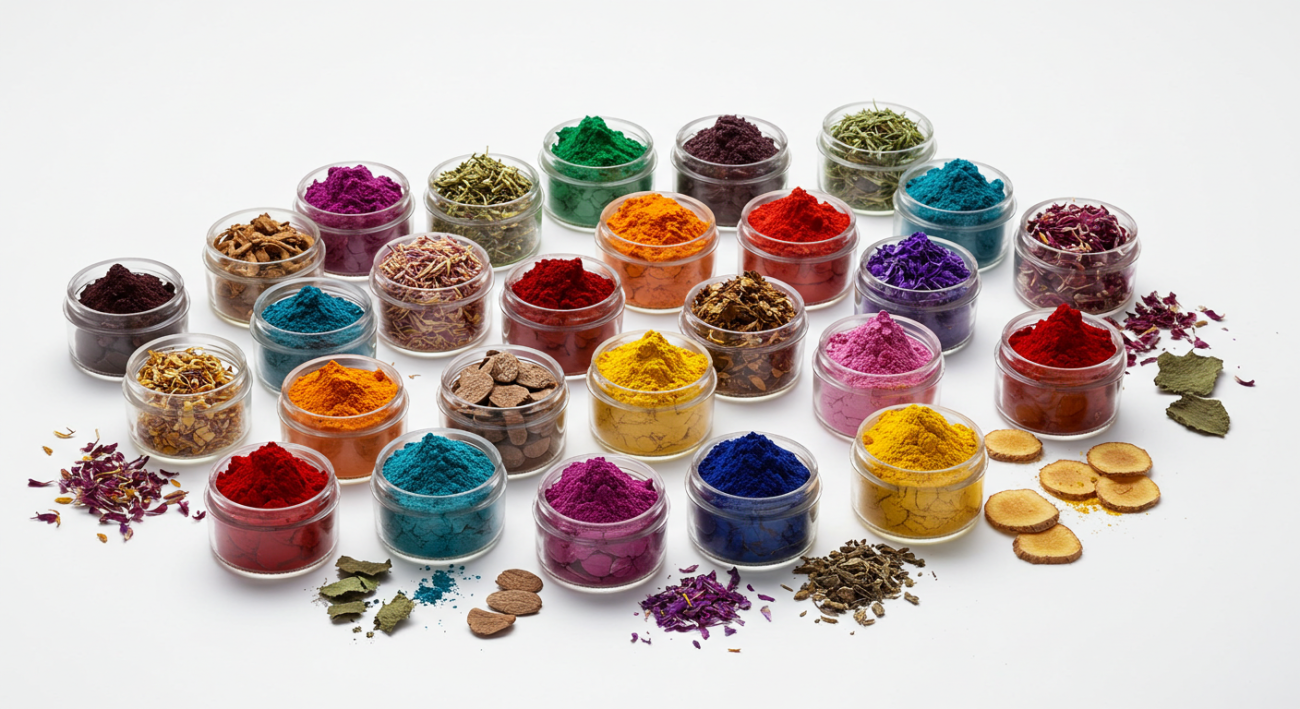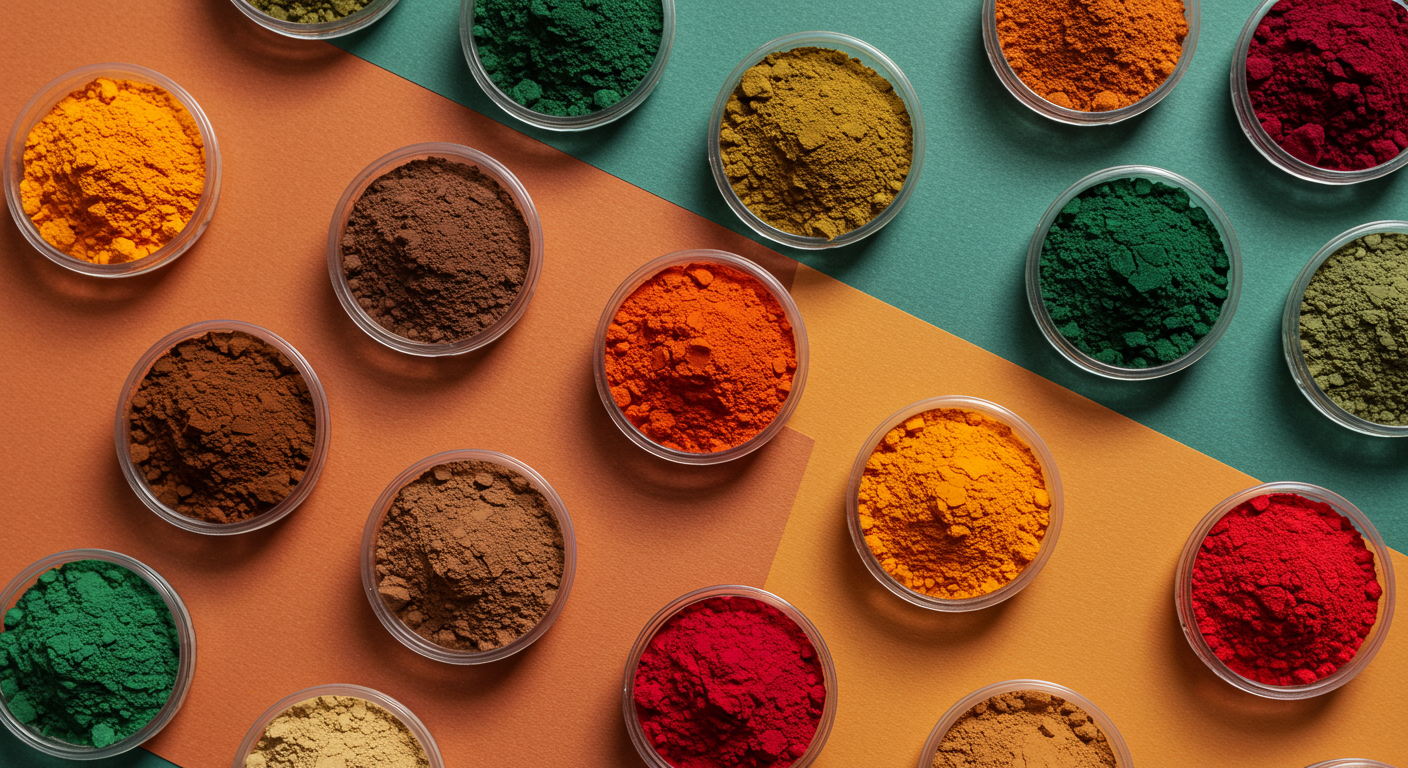What are Plant Pigments?
The bioactive compounds in plant pigments occur in flowers, leaves, roots, and fruits. They are carotenoids, anthocyanins, flavonoids, and chlorophyll. These substances make plants acquire their colors- red, yellow, green, and purple. These plant pigment for cosmetics are refined and stabilized in cosmetics so that they maintain color stability, safety, and skin compatibility.
High Purity
- Our curcumin extract is created to fulfill the best standards of the industry to guarantee the utmost purity and strength.
- It is not contaminated or adulterated and ensures that there are uniform outcomes in the cosmetic formulations.
- Pureness guarantees rich natural color and efficiency of skin-care products.
Competitive Pricing
- Premium cosmetic plant pigment at comfortable and competitive prices.
- Business-friendly to both large and small businesses, enabling you to maximize ROI without having to reduce quality.
- Scalability of packaging assists brands in adjusting to their requirements.
Fast Shipping
- The global supply chain is not disrupted due to reliability and expedition in global delivery.
- Large orders or even smaller bulk shipments are delivered safely to strict production schedules.
- Quick delivery ensures that you will be able to introduce new cosmetic products in time.
Expert Support
- We advise on the formulation, dosage, and application of curcumin by our technical team.
- Creams, serums, and lotions, YOU can get the most out of this natural pigment with tailored solutions.
- The support guarantees that your cosmetic products to be effective and presentable.
Topical Uses of Curcumin:
- Natural Pigment: It is a warm, golden skin-care pigment, a natural dye that builds the visual effect of the products rather than artificial dyes.
- Anti-Aging Properties: Known to have a high level of antioxidants, curcumin aids in the formation of fine lines and wrinkles, which are the effects of aging.
- Skin Brightening: Enhances skin tone and diminishes dullness, and appears radiant appearance.
- Soothing Effect: Anti-inflammatory properties will reduce irritation and redness and are appropriate for sensitive skin.
Additional Applications:
- Pharmaceuticals: Endorses health formulations by the reason of antioxidant and anti-inflammatory effects.
- Food Industry: This is a natural preservative and a natural colorant that is safe in clean-label products.

Why is Curcumin the Most Desirable Plant Pigment to Use in Cosmetics?
- Vibrant color and effectiveness are achieved by high purity.
- Non-toxic, natural, and safe, and the right ingredients are in the current cosmetic formulations.
- Multifunctional: integrates the coloring, anti-aging, and skin-soothing relationship.
- Supported by a solid supply chain, competitive prices, and professional service, which guarantees business success.
- Curcumin is an excellent cosmetic ingredient in terms of natural color and skincare properties, but it is also safe, and that is the reason Curcumin is a top option for a modern cosmetic brand.
Curcumin – The Best Plant Pigment in Skincare
The most popular plant pigment for cosmetics is curcumin, which provides a natural color together with skin-beneficial effects. Being a natural colorant that is a safe and chemical-free alternative to synthetic dyes, it has been suggested as an ingredient in current skincare and cosmetic products because it is a yellow-orange colorant that cannot cause harm to the skin in any way when applied as a skincare or cosmetic ingredient.
- Curcumin is used in cosmetics such as creams, serums, lotions, and makeup items to improve the look of the skin. It contains a strong antioxidant that can counteract the effects of free radicals, which cause aging effects (fine lines and wrinkles) to appear. Moreover, the anti-inflammatory effects of curcumin calm irritated skin, and this feature is appropriate for use on sensitive skin.
- In addition to its functional value, curcumin is also used as a natural colorant that gives an appealing and warm color to products. It has a multifunctional nature and enables cosmetic brands to incorporate color, protection, and skincare properties in one ingredient.
- Through curcumin’s application as a plant color in cosmetics, formulators can produce safe, effective, and aesthetically pleasing products that facilitate healthy and radiant skin. Its natural derivation, established effectiveness, and multitasking qualities make it one of the best innovations in skincare and cosmetics.
Plant Pigments Advantages in Cosmetics
Free of toxins and not irritating to sensitive skin.
Vegan and Cruelty-Free
- Environmentally friendly and sustainable, lessening chemical contamination.
- Full of antioxidants that can feed and protect the skin.
- There is natural UV protection in certain pigments, such as carotenoids.
- External reference: Study of plant pigment NCBI Plant Pigments Study.
Plant Pigments Processing
The process of production consists of:
- Extraction: Pigments are extracted using water, ethanol, or glycerin.
- Filtration and Purification: Eliminates impurities and guarantees the stability of color.
- Stabilization: Microencapsulation or entrapment into natural carriers.
- Formulation: Mixed with lipsticks, blushes, eye shadows, and foundations.
- This guarantees standard color, increased shelf-life, and security of cosmetic products.
Applications in Cosmetics
- Lipsticks and Lip Tints: Semper herbicides, Anthocyanin, and beetroot pigments.
- Eyeshadows: carotenoids and flavonoids.
- Blush and Cream Products: Anthocyanins and carotenoids.
- Foundations and Creams: Vegan skin-color modifiers.
- Internal Link Suggestion: See what we have to offer at B-Thriving Cosmetic Extracts.
Greens and Environmental Pros
Plant pigments would minimize the use of synthetic dyes that usually have dangerous chemicals. A lot of pigments are obtained from renewable vegetable sources. Cosmetic producers can produce nothing with no wastage by incorporating by-products such as beetroot peel or carrot pomace.
- Health and Safety Regulations
Plant pigments used in cosmetics should be of cosmetic grade required by the FDA or EU standards of cosmetic regulating laws. They are supposed to be non-irritating, hypoallergenic, and non-heavy metal.
- Market Trends
There is an increasing demand for plant-based pigments. Consumers want vegan beauty products, chemical-free ones, and environmentally friendly products. The brands that add these pigments usually have increased trust and brand loyalty in the market.
Conclusion
plant pigment for cosmetics origin is not an act or a fad–they are the future of safe, sustainable, and colorful beauty. They have technical advantages such as stability and antioxidant effects, and respond to consumer needs for environmentally friendly products. In the case of cosmetic manufacturers, B-Thriving, quality, safety, and competitiveness in the market make it worthwhile investing in plant-based pigments.

